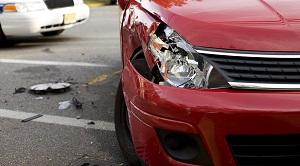
When it comes to insuring your vehicle, you probably know the basics, which is that auto insurance can help provide protection in the event of a theft, accident or disaster. However, there are a few different types of policies. Knowing the differences can help you make an informed decision. Learn more about two coverages below.
Collision Coverage
Collision coverage pays for the cost to damage repairs, and will even replace your entire vehicle if it is beyond repair when you are at fault. Typically, you will collect only the actual cash value of your car versus the replacement cost value. Gap insurance protects you in the event you owe more than your vehicle is worth.
- This is generally the most expensive portion of an automobile insurance policy.
- Premiums are based on your deductible, driving record and whether the coverage is truly necessary.
- Selecting a higher deductible will keep premium costs low, but you will pay more out-of-pocket in the event you are in an accident.
- If your driving record is fairly clean (no or very few tickets or accidents), your premium will be lower because you will be less likely to have a collision.
- If you fully own your vehicle or drive one that is extremely old and has little replacement value, then the premium may be high.
Comprehensive Coverage
Comprehensive coverage pays for damage to your vehicle that is caused by an unknown party (theft, vandalism) or “Act of God”—fire, natural disasters or hitting an animal on the road.
- Coverage comes with a deductible and the insurer will only pay as much as the vehicle is worth at the time of the wreckage.
- To calculate how much your car is worth, look up the Kelley Blue Book value or the National Automobile Dealers Association’s Official Used Car Guide value. If your car is worth less than the coverage, it is not a worthy investment.
- Comprehensive coverage has many limitations, so it’s best to review your policy carefully to assure that you are properly covered.
Considerations
Automobile insurance policies offer different coverages based on the type of policy that you purchase. Collision and comprehensive coverages provide financial safety nets in the event that your vehicle is physically damaged and needs to be repaired or replaced. Though these coverages are generally not required by state laws, they are certainly attractive options to reduce your financial hardship during a loss.
Also, if you are financing a loan for an automobile, your lender will most likely require both collision and comprehensive coverage as part of your automobile insurance policy.
